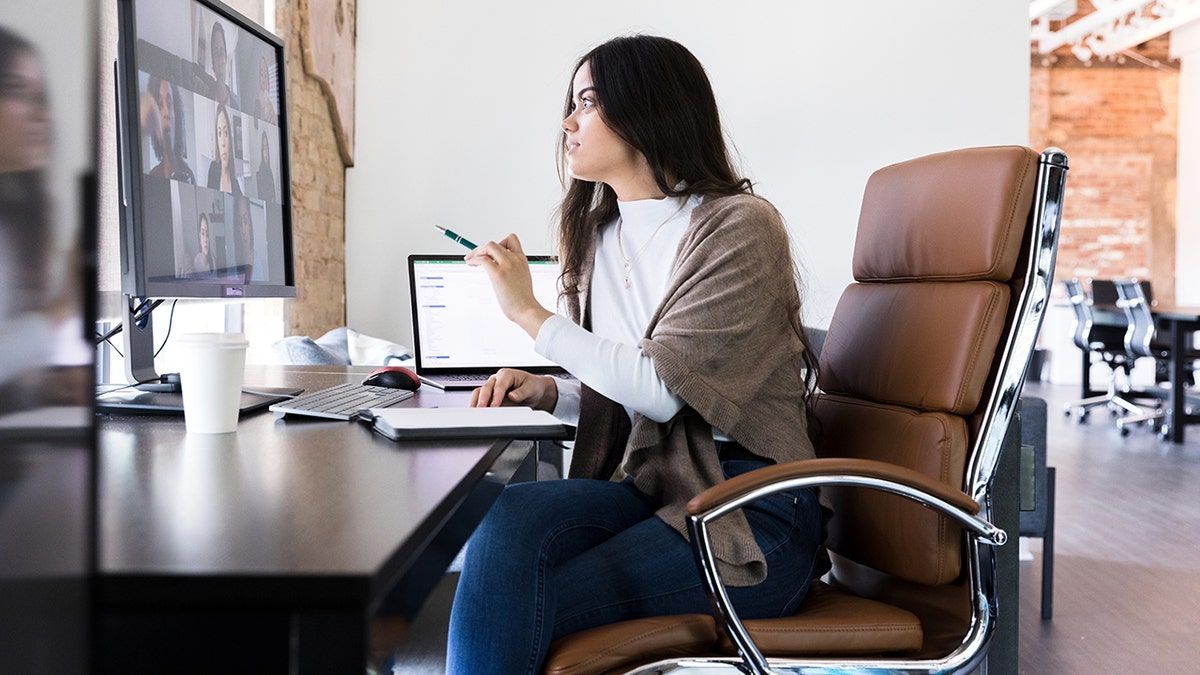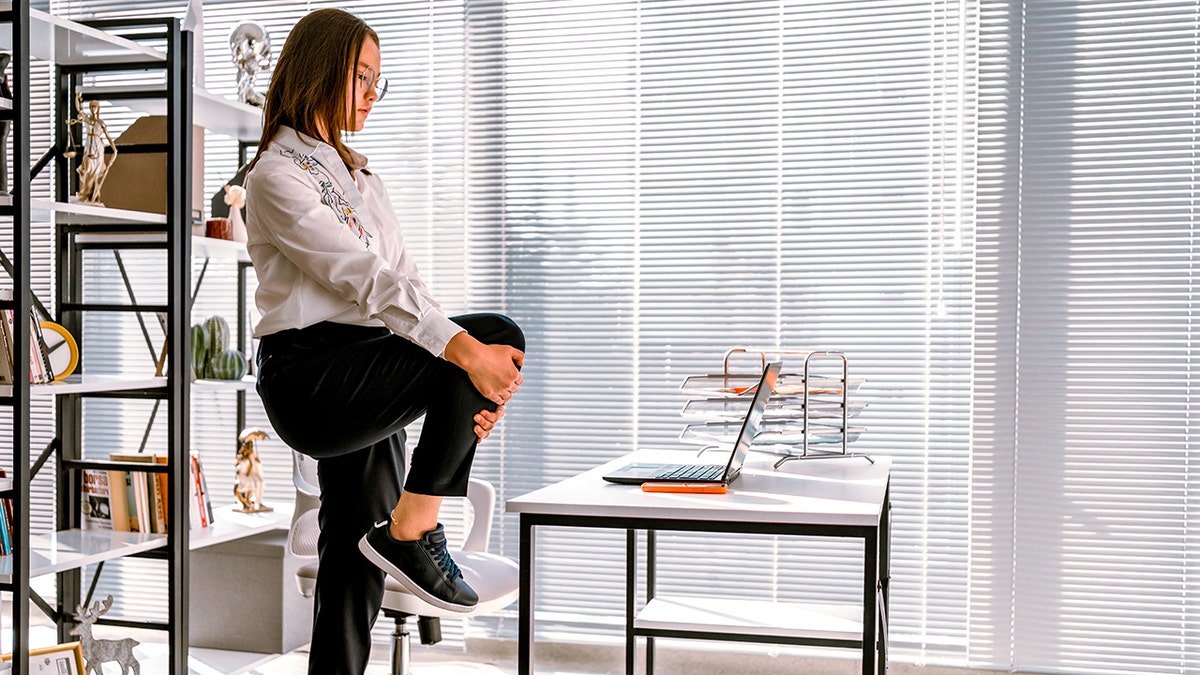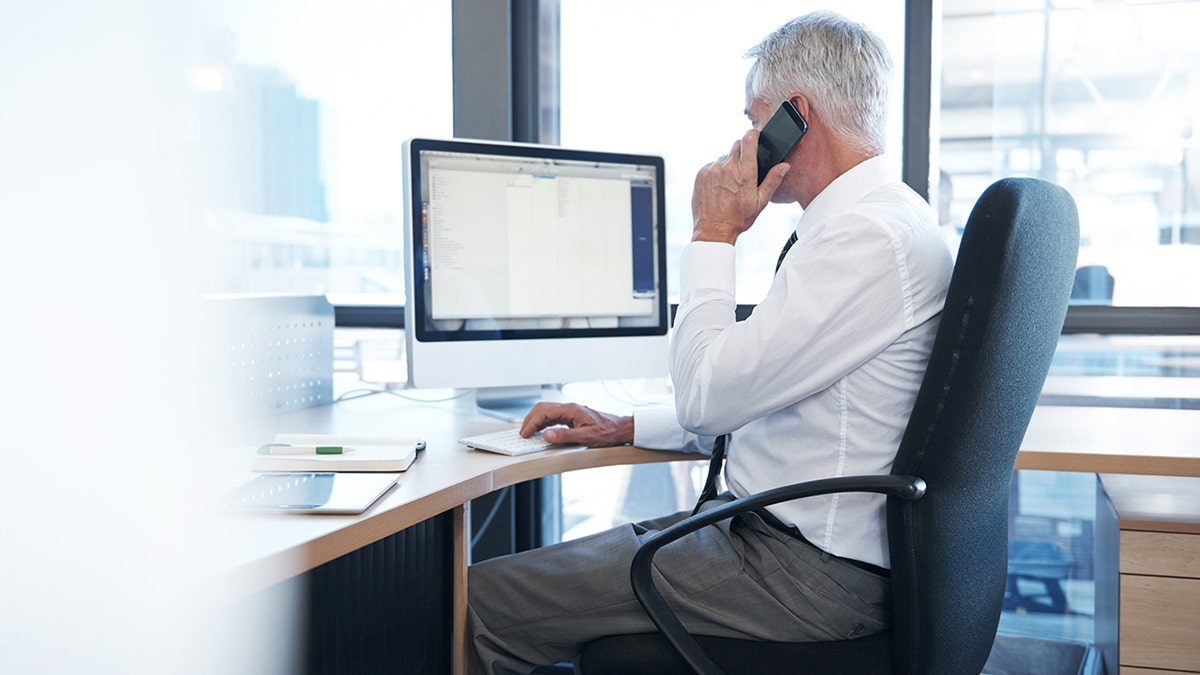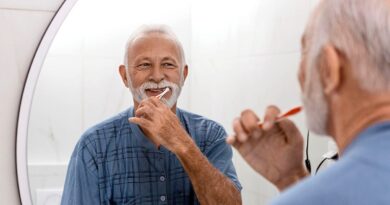Simple exercises to combat ‘office chair butt’ from sitting too long
NEWYou can now listen to Fox News articles!
Office workers have something new to worry about, according to a warning that’s gone viral on social media.
“Office chair butt” is trending as a side effect of sitting for too many hours, leaving the appearance of a flatter behind.
Alissa Mosca, a certified fitness trainer with Planet Fitness in New York, confirmed that “office chair butt” refers to muscle loss due to sitting stagnant in one position and not activating the muscles in the posterior chain (along the back of the body).
‘I’M A SPINAL SURGEON – HERE’S HOW YOUR POSTURE IS KILLING YOUR BACK’
To combat this, Mosca recommends performing the following simple exercises throughout the day to stimulate muscle activation in the glutes, hamstrings and quads.

“Office chair butt” can occur with prolonged sitting and lack of muscle movement, experts warn. (iStock)
- Air squats (using only body weight, squat down and then return to a standing position)
- Lunges (step forward or backward until the knee is bent at a 90-degree angle with the back straight)
- Good mornings (bend forward at the hips with a straight back, then return to an upright position)
- Bulgarian split squats (perform a lunge forward while the back foot is elevated on a bench or platform behind you)
“These four exercises require no equipment and can even be done from the office chair,” she added.
SITTING STILL FOR THIS AMOUNT OF TIME IS RELATED TO HIGH RISK OF NECK PAIN, STUDY SAYS
“It’s important to not only focus on strength training exercises that activate the glutes, which are being sat on all day, but the surrounding muscles as well, which is what adds support to the whole posterior chain,” Mosca said.
She encourages office workers to incorporate some type of movement every time they get up from their seat — ideally picking one of the four movements above and performing 12 to 15 reps, two to three times.
“Once that becomes more of a routine, try setting a timer to do this every 45 minutes to an hour,” the trainer suggested.

A trainer recommends that office workers stand up every hour to stretch and work the muscles. (iStock)
Incorporating these exercises into a gym routine is also a great way to prevent muscle loss, according to Mosca.
This might include a circuit with kettlebell swings, Smith machine squats (performed on a machine with a fixed barbell), hip thrusts and walking on an incline.
SIMPLE DAILY ACTIVITY COULD REDUCE RISK OF LOWER BACK PAIN, STUDY FINDS
Jonathan Puleio, a board-certified professional ergonomist and global vice president at Humanscale – a New York City consulting practice focused on corporate ergonomics – also spoke about “office chair butt.”
CLICK HERE TO SIGN UP FOR OUR HEALTH NEWSLETTER
“Not only are the muscle groups atrophying and weakening, but there’s also a buildup of fat tissue, which has a very different consistency and density than muscle,” he told Fox News Digital. “That’s why … the shape of the tissue appears much flatter — and even saggy, in some scenarios.”

Office chairs with more supportive mechanisms or standing desks are great swaps for promoting better posture and movement, experts advise. (iStock)
Puleio agreed that muscle atrophy can be supported by movement and posture shifts, but noted that chair design also plays a big role.
“Any chair design that can promote movement and support postural shifts regularly throughout the day can certainly combat issues like this,” the expert said.
CLICK HERE TO GET THE FOX NEWS APP
Sitting in a chair that supports movement, such as one with a self-adjusting recline mechanism, can help prevent this condition, according to Puleio.
“The recline tension is based on the user’s body weight,” he said. “This removes the barriers to movement that we typically see on traditionally designed chairs.”

Simply walking is a great exercise to strengthen muscles during the workday, experts say. (iStock)
Puleio also recommends using sit-to-stand workstations and performing some tasks while standing, such as taking a phone call on your feet.
“Taking micro-breaks, stepping away from your work, going to get a glass of water, taking a lap around the office, going outside and taking a quick walk – these are all great ways to combat this particular issue,” he said.
For more Health articles, visit www.foxnews.com/health
The expert also urges employers to take their employees’ comfort seriously and to take steps to ensure healthy workplace ergonomics.
“Discomfort is the precursor to pain and injury,” he warned, noting that injuries can be “costly and debilitating.”





